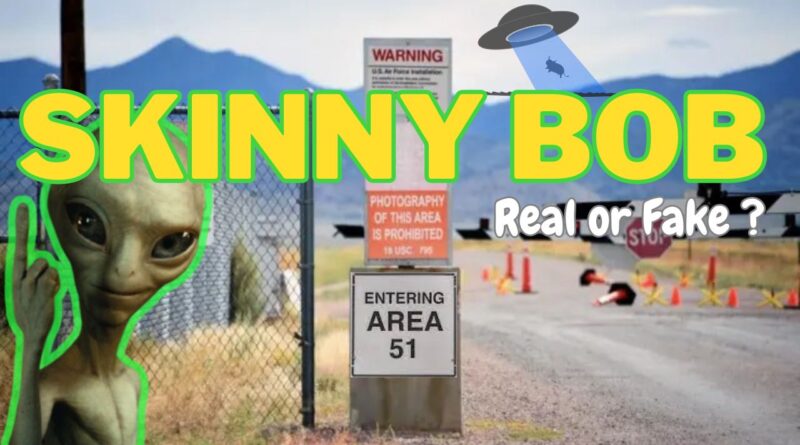Area 51’s Forbidden Tape: The Alien Interview They Tried to Bury
G’day fellow truth-seekers! Sergeant Grumpy here, bringing you another deep dive into the murky waters of UFO lore. Today, we’re examining one of the most controversial pieces of alleged extraterrestrial evidence from the late 1990s – “Area 51: The Alien Interview.”
As a former police sergeant with 20 years on the force, I’ve learned to approach extraordinary claims with a healthy dose of skepticism. This case certainly demands it.
The Victor Tapes: A Timeline
On May 23rd, 1997, millions of viewers tuned into Coast to Coast AM to hear from a mysterious figure known only as “Victor.” This enigmatic chap claimed to have smuggled footage out of the infamous Area 51, purportedly showing a genuine interview with an extraterrestrial being (sometimes referred to as “Skinny Bob”).
Victor went to great lengths to conceal his identity, using a voice changer and refusing to provide personal details. According to his account, the government was relocating their alien programs, and during the digitization process of classified records, he managed to acquire this explosive footage.
His story was certainly compelling. Victor claimed he’d been having direct encounters with extraterrestrial beings since 1989. He suggested these entities were attempting to communicate advanced scientific concepts to humans but were struggling due to our primitive understanding[1]. A tantalizing premise that captured the imagination of UFO enthusiasts worldwide.
Technical Analysis: Film vs. Video
The technical aspects of the footage provide some interesting points to consider. Jim Dilettosa, an image analyst who examined the tape, raised several observations that added complexity to the debate:
- The footage might not have been shot on standard video as Victor claimed, but could have originated from film stock
- The lack of moiré patterns typically seen in video footage suggested a different recording medium
- The images appeared to have undergone a complex transfer process, more common in film production than video
- The low light conditions would have required very specific filming conditions.
Dilettosa noted that early video had an appalling dynamic range compared to film, with details in shadows and highlights being much more apparent in film recordings[1]. These technical insights added layers to the debate about the tape’s authenticity.
The Production Company Angle
Victor eventually took his footage to Rocket Pictures, the production company that would release the film. Tom Coleman, the president of Rocket Pictures, expressed skepticism about Victor’s credibility but was intrigued enough to pursue the project.
Coleman demanded more disclosure than Victor was willing to provide, creating tension between them. Victor insisted: “My purpose is to expose the existence of the aliens, not compromise these individuals. I made the decision to come forward. I’m taking precautions to protect my own identity and I don’t think it’s fair for me to put these others in danger of exposure.”
Despite these issues, Rocket Pictures proceeded with the project and released “Area 51: The Alien Interview,” which generated significant buzz but also substantial skepticism from critics questioning its authenticity.
Weighing the Evidence
Let’s break down what we’re dealing with here:
Points of Interest:
- The concept of an actual alien interview is inherently fascinating and taps into our collective curiosity about extraterrestrial life
- Dilettosa’s technical analysis provided some interesting angles by suggesting the footage could be film rather than video
- The film has remained a topic of discussion in UFO circles for decades, influencing how we think about government secrecy and alien encounters[1]
Red Flags:
- Victor’s identity remains unverified, and he provided no substantial evidence to back his claims
- Special effects experts criticized the footage for its jerky movements and poor lighting, suggesting it looked more like a puppet than a real alien
- The interrogation setting (near darkness with light shining in the subject’s eyes) raises significant authenticity concerns
As I often tell my YouTube audience, that darkened room with light shining in the eyes is pure Hollywood – it’s not how real interrogations and interviews are conducted. Having conducted countless interviews during my police career, I can assure you that proper lighting and clear documentation are essential.
The Verdict
“Area 51: The Alien Interview” remains a polarizing piece of media. For some, it’s compelling evidence supporting extraterrestrial life; for others, it’s another example of how easily people can be misled by sensational claims.
Whether you believe Victor’s story ultimately comes down to your perspective on evidence and your willingness to embrace the unknown. As someone who’s spent years investigating unusual claims, I find this one “maybe just a step too far.”
It’s crucial to approach such claims with skepticism while remaining open-minded. After all, we live in a world filled with mysteries, some natural, that have yet to be uncovered.
What do you think? Is Victor telling the truth, or is this just another elaborate hoax? Drop your thoughts in the comments below, and remember – keep questioning everything!
Until next time, this is Sergeant Grumpy signing off. Don’t forget to like, subscribe, and join me for more deep dives into UFO lore, conspiracy theories, and the unexplained.

